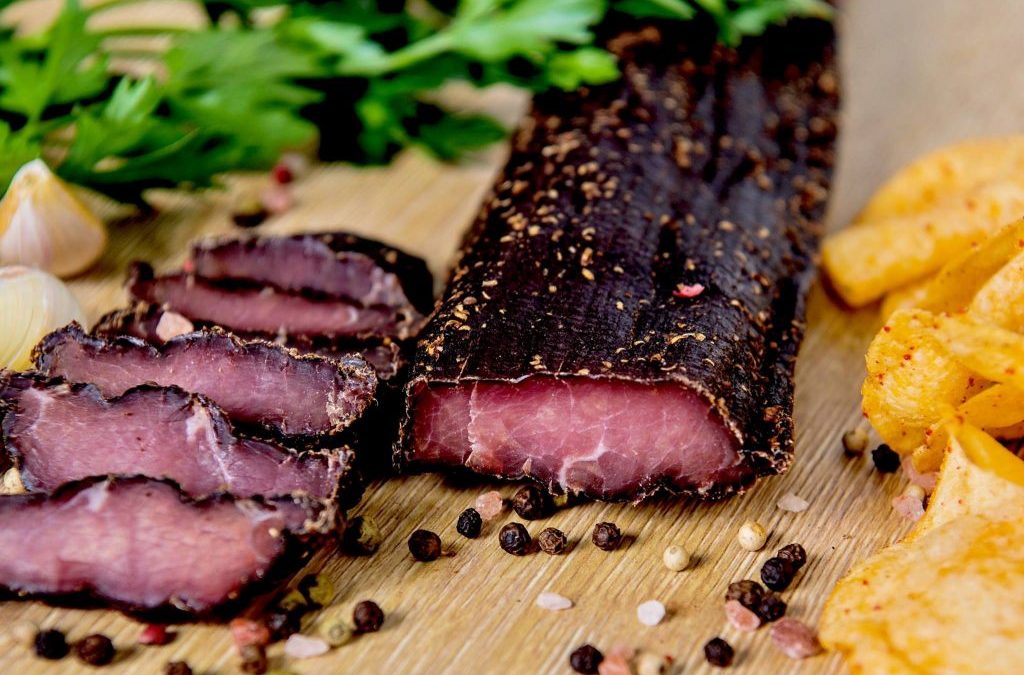Biltong Gets 6600 Searches a Month in Australia
If everyone else is like me, then one of the things on your bucket list must be eating and sampling delicacies from different parts of the world. That is why many Aussies are now frequenting exotic-dish restaurants to try and have a taste of various foods from all over the globe. Popularly known as ‘South African jerky’, biltong has now become very popular with Australian citizens and most of them have sampled its delight. It is a form of dried, cured meat that originated from Southern African countries and is usually produced using various types of meat, ranging from game meat to fillets. Biltong’s fast rising popularity is now widely available from South African shops in Australia.
Exotic cuisine in Australia
Australia has for a long time been a melting pot of different cultures as more than half of the country’s population consists of foreigners who come to the country as either students, entrepreneurs and even skilled occupation immigrants. Therefore, most of its citizens originated from Asia and Europe and made Australia their home. It is for this reason that there are abundant restaurants that serve exotic cuisine from all corners of the world. This is a classic case of travelling the world without ever leaving your country.
Biltong’s rising popularity
The reason for biltong’s fast rising popularity is because it is almost similar to the common beef jerky which is a very popular delicacy in the western countries. Though the taste and preparation of the two delicacies is different, they are both strips of dried, spiced meats and hence many people relate to it. One of the major differences between jerky and biltong is the taste and this is brought about by the different spices used. Those used in the preparation of biltong are mostly black pepper, coriander, salt and vinegar and these are what give it that distinguishing taste. It is mostly made of beef mainly because of its availability and low cost. However, biltong is also made from chicken, fish, game meat, and Ostrich meat.
How biltong is prepared
Biltong preparation is another distinguishing factor between it and jerky. Traditionally, it was mostly made during the cold season when risk of bacterial growth was minimal. For those who prefer to marinate, they do so using vinegar solution, balsamic or even cider. This is done for a few hours before the solution is poured and the meat flavored with salt and spices. The next step is usually leaving the meat for some hours, or refrigerating the meat overnight before excess fluid is poured off and then hang so as to dry.
How biltong is dried
Since biltong was mostly made during the cold months of the year, the cold, dry air dried the meat very effectively. This also ensured minimal bacterial risk as they could not survive in such extreme temperatures. Drying using heat has only been adapted recently but the risk of bacteria exposure is more significant.
Difference between biltong and jerky
Most people are not able to distinguish between jerky and biltong but there are three main distinguishing features. Biltong is thicker that jerky, vinegar is usually used in the preparation of biltong but not jerky and unlike biltong, jerky is normally smoked.
Related Posts
Categories
- Corporate SEO (34)
- Corporate SEO Company (18)
- Corporate Videos (1)
- Enterprise Social Networking (1)
- Fashion SEO (7)
- Featured (22)
- Inspiration (1)
- Medical SEO (8)
- Offsite SEO (12)
- Prestige Brand SEO (21)
- Search Engine Optimisation (31)
- SEO Articles (35)
- SEO Australia (26)
- SEO Case Studies (20)
- SEO Sydney (19)
- SEO Sydney Clients (18)
- Social Media (8)
- Style (3)
- Tips & tricks (8)
SEO Client Testimonials
"When we started with Stewart and his team in 2011 we had one website and a small clinic in Artarmon. Now we've moved to massive premises in the centre of Chatswood, thanks to the influx of patients from our 4 new websites." Emma Boulton, Clinic 66.
"Our lives have gone forward dramatically since we got involved with the Corporate SEO Company. We've had media interest from all the major newspapers, won awards, and got our chai product not just into Coles and Woolies, but a stack of new countries." Martin Buggy, Bondi Chai.





